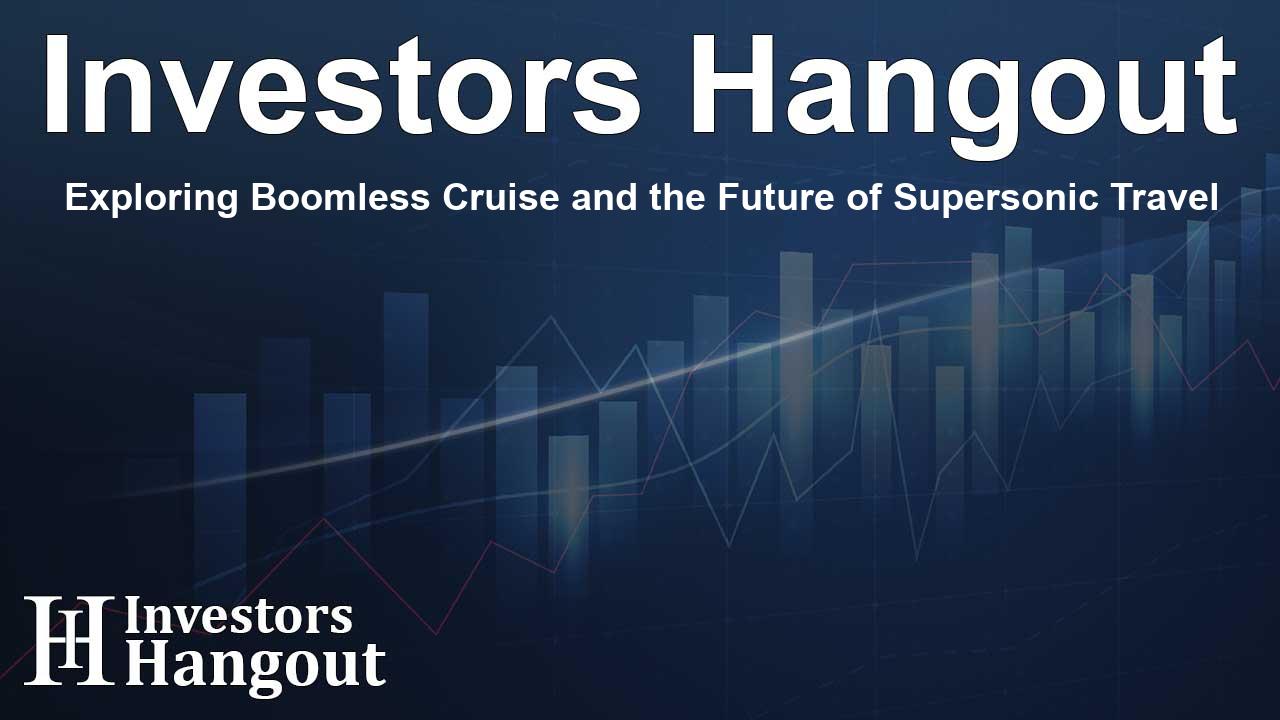Exploring Boomless Cruise and the Future of Supersonic Travel

Introduction to Boomless Cruise
Boom Supersonic has made significant strides in aviation with the introduction of its groundbreaking concept, Boomless Cruise. This innovative approach allows its Overture supersonic airliner to fly faster than conventional jets without the disruptive sonic boom typically associated with supersonic travel.
The Revolutionary XB-1 Aircraft
During successful test flights, the XB-1 demonstrator aircraft showcased its ability to achieve supersonic speeds three times without producing an audible sonic boom. This achievement confirms the potential for quiet supersonic travel, enabling flights at speeds up to 50% faster over land and twice as fast over water.
Understanding the Physics Behind Boomless Cruise
The phenomenon at play in Boomless Cruise is known as Mach cutoff. Essentially, this scientific principle explains how sonic booms can refract in the atmosphere and avoid reaching the ground. By flying at elevated altitudes and precise speeds, the XB-1 exemplified the feasibility of this technology, paving the way for Overture to implement these findings.
A Statement from Boom Supersonic's CEO
Blake Scholl, Founder and CEO of Boom Supersonic, stated, "XB-1 broke the sound barrier three times during its first supersonic flight—without an audible boom. This confirms what we've long believed: supersonic travel can be affordable, sustainable, and friendly to those onboard and on the ground. With this success, we're bringing Boomless Cruise to Overture, unlocking faster travel on even more routes." This affirmation reflects the dedication of Boom Supersonic to create a faster, quieter, and environmentally friendly travel experience.
The Potential of Overture
With Boomless Cruise, Overture aims to fly at speeds approaching Mach 1.3 while shedding the sonic boom nuisance. For instance, it promises to reduce travel times across the U.S. from coast to coast by nearly 90 minutes. Such advancements promise to transform the landscape of air travel, making it quicker without compromising the quality of life for communities along flight paths.
Engineering Innovations in Supersonic Travel
Overture's propulsion system, Symphony, is tailored specifically to facilitate such unprecedented performances. This system demonstrates groundbreaking transonic thrust capabilities that will allow Overture to exceed traditional limits of speed. Additionally, an advanced autopilot adjusts the craft's performance in real-time, ensuring the quietest speeds are maintained while navigating different atmospheric conditions.
Anticipating the Future of Aviation
Boom Supersonic is pushing the boundaries of aviation with aims to complete thrust production tests for Symphony by the end of a planned timeline. This endeavor will involve examining critical components such as the compressor, combustor, and turbine sections. Each phase of testing is crucial for ensuring operational efficiency and safety for future commercial flights.
Expanding Market Outlook
Currently, Boom Supersonic boasts a robust order book for Overture, with commitments totaling 130 aircraft from notable airlines, including American Airlines and United Airlines. The establishment of the Overture Superfactory, designed to produce 66 aircraft annually, signifies Boom's commitment to scaling production and meeting growing demand.
Moreover, Boom's commitment to sustainability is evident, as Overture is designed to operate on up to 100% sustainable aviation fuel (SAF), aligning with global efforts to reduce carbon footprints in the aviation industry.
Conclusion: A New Era in Supersonic Travel
With the advent of Boomless Cruise, Boom Supersonic is set to revolutionize air travel, delivering unprecedented speeds while maintaining a focus on environmental impact. The successful test flights of XB-1 embody the promise of future supersonic flight that is not only fast but considerate of the communities it serves.
Frequently Asked Questions
What is Boomless Cruise?
Boomless Cruise is a technological advancement that allows Boom's Overture aircraft to fly at supersonic speeds over land without producing an audible sonic boom.
How fast can Overture travel?
Overture can reach speeds of Mach 1.3 without a sonic boom over land and Mach 1.7 over water, significantly reducing flight times.
Who is the CEO of Boom Supersonic?
Blake Scholl is the Founder and CEO of Boom Supersonic, leading the company in its mission to enhance travel through innovative technology.
What fuels will Overture use?
Overture is designed to operate on up to 100% sustainable aviation fuel (SAF), promoting eco-friendly air travel.
When did the XB-1 complete its first supersonic flight?
The XB-1 successfully completed its first supersonic flight in January 2025, demonstrating the capability for quiet supersonic travel.
About The Author
Contact Caleb Price privately here. Or send an email with ATTN: Caleb Price as the subject to contact@investorshangout.com.
About Investors Hangout
Investors Hangout is a leading online stock forum for financial discussion and learning, offering a wide range of free tools and resources. It draws in traders of all levels, who exchange market knowledge, investigate trading tactics, and keep an eye on industry developments in real time. Featuring financial articles, stock message boards, quotes, charts, company profiles, and live news updates. Through cooperative learning and a wealth of informational resources, it helps users from novices creating their first portfolios to experts honing their techniques. Join Investors Hangout today: https://investorshangout.com/
The content of this article is based on factual, publicly available information and does not represent legal, financial, or investment advice. Investors Hangout does not offer financial advice, and the author is not a licensed financial advisor. Consult a qualified advisor before making any financial or investment decisions based on this article. This article should not be considered advice to purchase, sell, or hold any securities or other investments. If any of the material provided here is inaccurate, please contact us for corrections.
